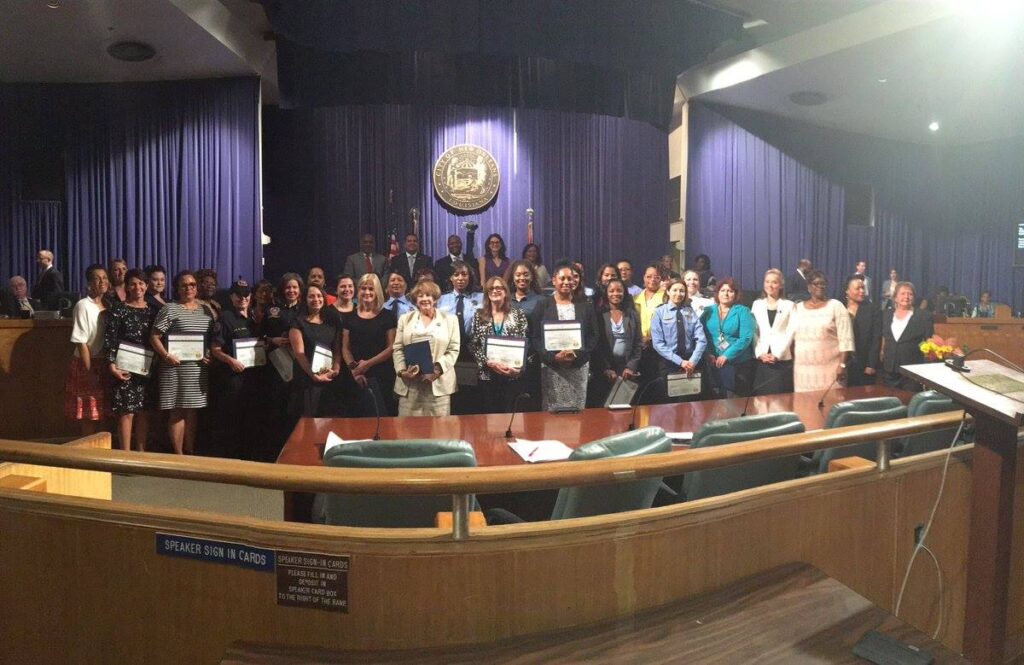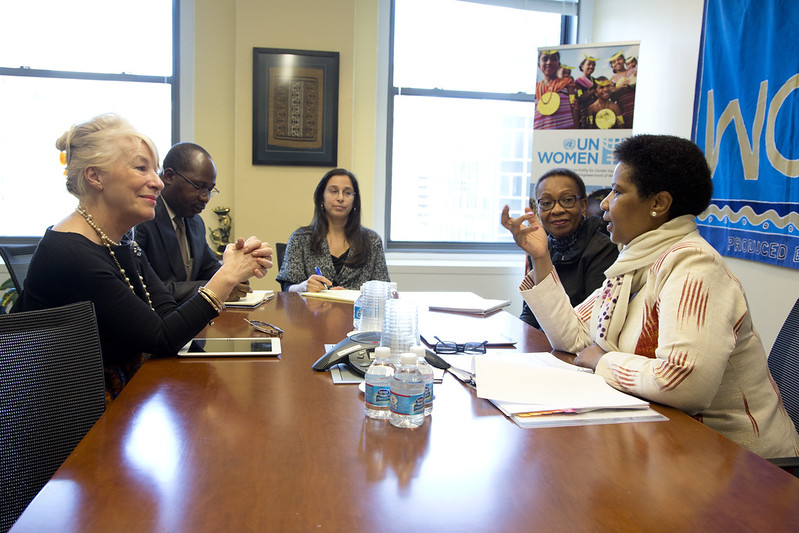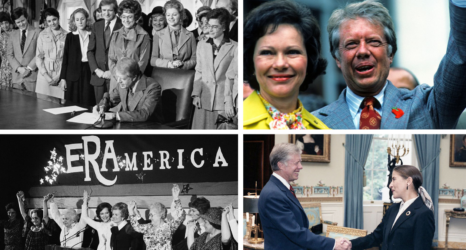The recent passage of L.A. County’s CEDAW ordinance, coupled with the gendered impacts of COVID-19, underscores the need to expand and strengthen local CEDAW implementation as a strategy to advance gender justice.

Since 1998, dozens of local governments across the United States have passed measures implementing the United Nations Convention to Eliminate All Forms of Discrimination Against Women (CEDAW). Indeed, a grassroots movement, referred to as “Cities for CEDAW,” has coalesced around the adoption of these measures. Recently, Los Angeles County—the most populous local jurisdiction in the country—passed its own CEDAW measure, marking an inflection point in the movement’s trajectory. Now is the time to expand and strengthen local CEDAW implementation throughout the U.S., especially given the deleterious impacts of the COVID-19 pandemic on women, girls and gender minorities.
CEDAW and the Cities for CEDAW Movement
CEDAW is a core international human rights treaty and the principal legal instrument for ensuring gender-based rights across the globe. The rights enshrined in the treaty promote gender justice in every area of life—civil, political, economic, social and cultural. These rights apply through an intersectional lens, which recognizes a broad range of intersecting identities (broader, in fact, than the range of protected characteristics under U.S. law).
In addition to setting forth substantive rights, CEDAW delineates the mandate of an oversight body, the Committee on the Elimination of Discrimination against Women (CEDAW Committee). The CEDAW Committee issues authoritative interpretations of the treaty, focused recommendations to governments following periodic reviews and quasi-judicial decisions on complaints alleging treaty violations. These interpretive statements, targeted recommendations and case decisions give detailed meaning to the text of the treaty. They also ensure that the treaty’s provisions remain dynamic, keeping pace with evolving gender discourses.
CEDAW has been ratified by every country in the world, except for six: Iran, Sudan, Somalia, Palau, Tonga and the U.S. Although President Carter signed CEDAW in 1980, the Senate has never approved the treaty by a two-thirds vote, as the Constitution requires for ratification.
In response to the U.S.’s failure to ratify the treaty, grassroots advocates have focused on passing local measures that embody the key principles of CEDAW while addressing salient issues facing individual jurisdictions. Local governments have now passed more than 40 CEDAW resolutions and 10 CEDAW ordinances, establishing a firm foundation for the Cities for CEDAW movement. These measures have brought about remarkable strides in gender justice and helped cultivate human rights awareness at local levels.
Los Angeles County’s New Ordinance
L.A. County, which serves more than 10 million residents, recently passed a binding CEDAW ordinance. The ordinance provides that CEDAW principles “must be integrated in the County’s role as an employer, service provider, and community and business partner, and must apply to women and girls of all identities and categories.” It addresses gender justice in specific areas of local concern: economic development, education, housing and homelessness, gender-based violence, healthcare, criminal justice and voting rights. In doing so, it places particular emphasis on the experiences of BIPOC and migrant communities.
My students at the UC Irvine School of Law and I proposed the ordinance and conducted foundational research and advocacy. The County’s Women and Girls Initiative, Commission on Human Relations and Commission for Women took up the mantle and brought the proposal to fruition.
The County will likely enact supplemental measures to support and enforce CEDAW implementation. Its CEDAW program is expected to generate concrete reforms and help advance gender justice for millions of residents.
Looking Ahead: Expanding and Bolstering Local CEDAW Measures
Now that L.A. County’s ordinance has passed, the Cities for CEDAW movement is at a watershed moment. Local CEDAW implementation has shown to be a broadly applicable strategy, capable of addressing the varied issues and demands of a population as massive as the County’s. Meanwhile, the gendered impacts of the pandemic highlight the acute need for governmental proactivity with respect to gender justice. Thus, local CEDAW implementation should be expanded and bolstered across the country.

The following is a selection of ideas for doing so:
- Local governments serving populations of any size should pass their own CEDAW measures. Like L.A. County’s ordinance, the measures should be responsive to the priorities of each jurisdiction while reflecting overarching CEDAW principles.
- States have a role to play in facilitating local efforts. They should pass supportive legislation (such as California’s 2018 CEDAW Resolution) and incentivize city and county implementation by offering subsidies for CEDAW programs.
- Local governments that already have CEDAW measures can explore ways to strengthen them. For example, cities and counties can bolster their resolutions, which do not impose legal obligations, by passing binding ordinances.
- Another way local governments might strengthen existing measures is to engage with the detailed guidance of the CEDAW Committee—that is, the interpretive statements, targeted recommendations and case decisions issued by the body. By regularly considering such guidance, cities and counties can benefit from the body’s expertise and ensure that their CEDAW programs are dynamic and evolving.
- Consistent with the CEDAW Committee’s guidance (and L.A. County’s ordinance), all measures should be explicitly intersectional. Indeed, local CEDAW programs should recognize and address the particular experiences of those with a broad range of intersecting identities.
Local CEDAW implementation is a potent and viable strategy to advance gender justice, even for the most populous jurisdictions. Given the gendered impacts of the pandemic, the time is now for cities and counties across the U.S. to pass CEDAW measures or strengthen their existing ones. Hopefully, more than two decades in, the Cities for CEDAW movement is only just getting started.
Up next:





